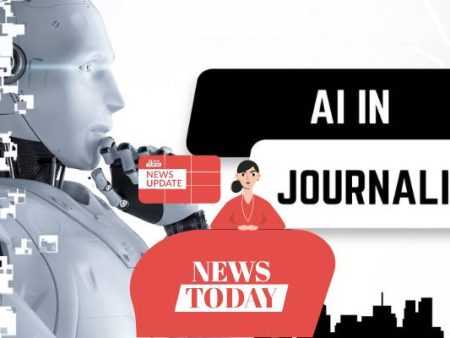I’ve sat through more than my fair share of corporate training sessions. Some were helpful, others dragged on painfully, and a few were so dry I wondered if they were secretly testing my endurance rather than teaching me anything useful. Sound familiar? Training is essential, but let’s be honest—it doesn’t always land.
Now, something is shaking up the way companies think about employee development: AI-generated training videos. And I’ll admit, at first I was skeptical. A machine making videos to teach humans? It sounded like another shiny tech gimmick.
But after digging deeper—and seeing the results firsthand—it’s clear this isn’t just hype. This is a fundamental shift in how organizations can scale learning, save time, and maybe even make training something employees don’t dread.
So let’s take a long, honest look at what’s going on.
Why Training Has Been Broken for So Long
Training has always been a challenge for organizations.
- It’s expensive: Hiring instructors, booking venues, paying for travel—it adds up fast.
- It’s time-consuming: Employees are pulled away from their actual work, which frustrates both them and managers.
- It’s inconsistent: The quality often depends on who’s leading the session that day.
And here’s the big one: traditional training rarely keeps up with the speed of business. In a world where product features change every month and compliance rules get updated constantly, how do you make sure employees aren’t learning outdated information?
That’s where AI comes in.
The Promise of AI-Generated Training Videos
AI-generated video platforms are stepping into this mess and offering something refreshingly practical: scalable, customizable, always up-to-date content.
Instead of scheduling a live workshop, a company can input text (say, a policy update or a sales script), and the AI instantly generates a polished training video. Need it in ten languages? Done. Want an avatar delivering it instead of a slide deck? Easy.
This isn’t just about efficiency—it’s about accessibility. Employees across time zones can learn at their own pace.
People with different learning styles can engage with visual, auditory, and even interactive content. And HR departments no longer have to choose between “fast” and “high quality.”
A Quick Reality Check
Of course, not all AI training videos are created equal. Some look slick but feel robotic, while others are surprisingly humanlike and engaging. I’ve tested a few platforms myself. The first time I watched an AI avatar explaining cybersecurity protocols, I laughed—it felt uncanny.
But after a few minutes, I realized I wasn’t paying attention to the avatar anymore. I was actually absorbing the information. And isn’t that the point?
The truth is, once the novelty wears off, you’re left with a tool that simply works better than a 50-slide PowerPoint.
The Numbers Behind the Hype
Let’s ground this in data for a moment.
- The global corporate training market was valued at around $332 billion in 2019, according to Training Industry reports, and it continues to grow steadily.
- Meanwhile, a report from Precedence Research projects that the AI in education market (which includes corporate learning) could reach $30 billion by 2032.
- Companies using AI training tools have reported up to 60% faster content production compared to traditional video creation, according to Deloitte research.
That’s not just hype—that’s impact.
What AI Brings That Traditional Training Can’t
Here’s what stands out to me about AI-generated training videos:
- Consistency Across the Board
No matter who watches, they get the exact same message, tone, and quality. - Localization at Scale
Training that once took months to translate can now be rolled out globally in days. - Customization
Content can be tailored for different roles or even individuals. Imagine a sales rep and a compliance officer watching slightly different versions of the same training, optimized for their needs. - On-Demand Learning
Employees can revisit videos anytime, unlike live sessions where knowledge fades fast.
It’s a leap forward, much like how video game cutscenes powered by AI changed interactive entertainment—turning static, one-size-fits-all experiences into adaptive, dynamic storytelling.
In training, that adaptability could mean the difference between employees zoning out and actually mastering new skills.
The Emotional Side of Training
Let’s pause here, because numbers only tell part of the story. Training is also about how people feel.
Think back to a time when you were forced into a poorly designed training. Maybe it was a compliance video that dragged on for 45 minutes.
Maybe it was a half-hearted presentation that clearly hadn’t been updated in years. How motivated did you feel afterward?
Now imagine watching a short, engaging video where the content is delivered in a clear, relatable way—maybe even in your own preferred language or with examples tailored to your role.
That’s where AI really shines. It doesn’t just deliver information—it creates a sense of respect for the learner’s time and needs. And that emotional nuance matters more than most companies realize.
Where Other Industries Offer Lessons
Interestingly, corporate training isn’t the only field being reshaped by AI video. We can learn a lot by looking at other industries:
- Marketing: Companies are already using AI in real estate marketing to generate walkthrough videos of properties, often with avatars guiding potential buyers. That same logic applies to training—virtual guides walking employees through processes.
- Politics: We’ve seen AI video in politics for everything from campaign ads to public messaging. The ethical concerns are real, but the efficiency is undeniable. Training departments can adapt similar strategies responsibly.
- Entertainment: As mentioned earlier, gaming has embraced AI-driven interactivity. Imagine training that feels more like playing—scenario-based learning that adapts in real time.
These parallels show that training isn’t operating in isolation. It’s part of a bigger wave of AI video adoption across industries.
The Ethical and Practical Concerns
I’d be lying if I said there aren’t concerns here. A few come up again and again in conversations I’ve had with learning professionals:
- Authenticity: Will employees trust information delivered by an AI avatar?
- Job Security: What happens to instructional designers and video producers if machines take over their roles?
- Data Privacy: If training videos are personalized, what happens to the data collected about employees’ learning habits?
- Over-Reliance: Will companies use AI as a shortcut, sacrificing quality for speed?
These aren’t minor issues. They need real discussion and guardrails. In my opinion, transparency is key. Employees should know when training content is AI-generated and why. Hiding that fact will only breed distrust.
The Human Element That Shouldn’t Be Lost
Here’s something I feel strongly about: AI should never erase the human element of corporate learning.
The best training I’ve ever had wasn’t just informative—it was personal. It came from a leader who shared their mistakes, or from a peer who told a story that stuck with me. AI can replicate knowledge delivery, but it can’t replicate vulnerability or empathy.
The sweet spot will be blending AI’s efficiency with human mentorship. Think of AI handling the basics, while managers and coaches bring the emotional depth. That’s where training becomes not just scalable, but meaningful.
What the Future Might Look Like
So, where is all of this heading? Here’s my best guess.
- Micro-Learning at Scale: Instead of hour-long modules, training will be broken into short, AI-generated bursts of content, optimized for mobile viewing.
- Interactive Simulations: Borrowing from video game cutscenes powered by AI, training could let employees make choices and see outcomes in real time.
- AI Mentors: Imagine an AI avatar that “knows” your role, strengths, and weaknesses, offering ongoing nudges and encouragement.
- Seamless Integration: Training videos won’t be standalone—they’ll be embedded in workflows, appearing exactly when you need them.
In other words, corporate training won’t just be an event. It’ll be a constant, personalized presence in the workday.
My Final Thoughts
I’ve come full circle on this. I started out skeptical, thinking AI training videos would be another trend that fizzled out. But after seeing the impact, talking to professionals, and testing tools myself, I’m convinced this is the future.
Not a future where humans are replaced, but one where they’re supported. A future where training is less about checking boxes and more about genuinely helping people grow.
The risks are real—ethical missteps, over-reliance, loss of human touch. But the potential rewards are too big to ignore. And if companies handle this responsibly, employees may finally get training that feels worth their time.
Because at the end of the day, training isn’t just about compliance or efficiency. It’s about people. And AI, surprisingly, might help us remember that.


